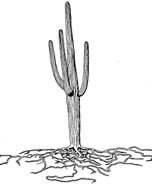 |
DIVISION
OF PLANT PATHOLOGY & MICROBIOLOGY |
|
|
||
 Dr.
Hans D. VanEtten
Dr.
Hans D. VanEtten
Division of Plant Pathology & Microbiology e-mail: vanetten@ag.arizona.edu |
||
|
|
||
| Area of Interest: Molecular mechanisms of plant pathogenesis, habitat specific genes on dispensable chromosomes, and synthesis of plant antibiotics. |
||
|
|
||
| Research
Goals: My main research interests are in elucidating the molecular and genetic properties that allow pathogenic fungi to overcome natural resistance mechanisms in plants. Many plants synthesize antibiotics (phytoalexins) in response to infection by microorganisms, and these compounds can serve as a natural barrier to potential pathogens. We have been investigating the possibility that some successful pathogens are able to overcome this resistance mechanism by evolving specific enzymes to detoxify the phytoalexin(s) produced by their host plants. Our main model pathogen- plant interaction is the disease on pea caused by the fungus Nectria haematococca. Our results indicate that maximum pathogenicity requires pisatin demethylase (pda), a substrate-inducible cytochrome P-450 that detoxifies the pea phytoalexin pisatin. The sequence of the PDA genes are highly divergent from all other members of the cytochrome P-450 superfamily of genes consistent with the adaptation of PDA for a specific function in pathogenesis. PDA activity is present in most pathogens of pea, and we are characterizing these other cytochrome P-450 genes and their products to determine if specific cytochrome P-450s have evolved in fungi for plant pathogenesis by horizontal gene transfer or convergent evolution. PDA genes are on dispensable (DS) chromosomes in N. haematococca and recent results indicate that other genes for pea pathogenesis (PEP genes) as well as genes allowing for saprophytic growth on root surfaces (the rhizosphere) are contained on these DS chromosomes. N. haematococca occupies many diverse biological habitats. This includes comensal relationship as well as pathogenic relationship with many plants in addition to pea. Our hypothesis is that the DS chromosomes in this organism serve as a reservoir for unique genes that allow an individual isolate to inhabit a specific habitat. We are testing this hypothesis by 1) determining the effect of loss of DS chromosomes on habit association, 2) identifying the PEP genes and rhizosphere conditioning genes on the DS chromosomes, and 3) determining the extent of recombination among different DS chromosomes and non-dispensable chromosomes and its effect on habitat association. A portion of our research effort is also devoted to identifying the plant genes involved in phytoalexin biosynthesis. The ultimate objective is to produce transgenic plants that either lack the ability to produce phytoalexins or have the ability to produce new types of chemicals as phytoalexins. Such transgenic plants can be used to determine the precise role of these plant antibiotics in the resistance of plants to disease. |
||
|
|
||
|
Selected Publications:
|
||
|
|
||
| For more information
contact: Dr. Hans VanEtten University of Arizona Department of Plant Sciences Division of Plant Pathology & Microbiology 303 Forbes Building Tucson, AZ 85721-0036 Office Phone: (520)621-9355 |
||
|
|
||
|